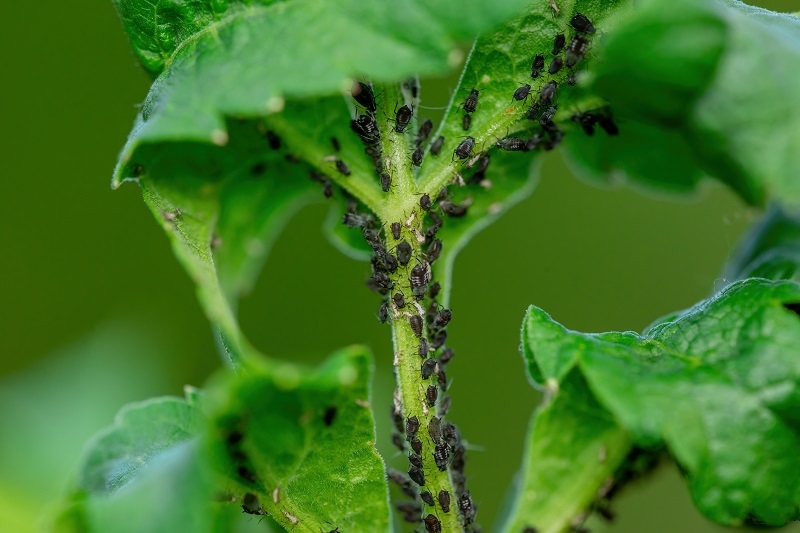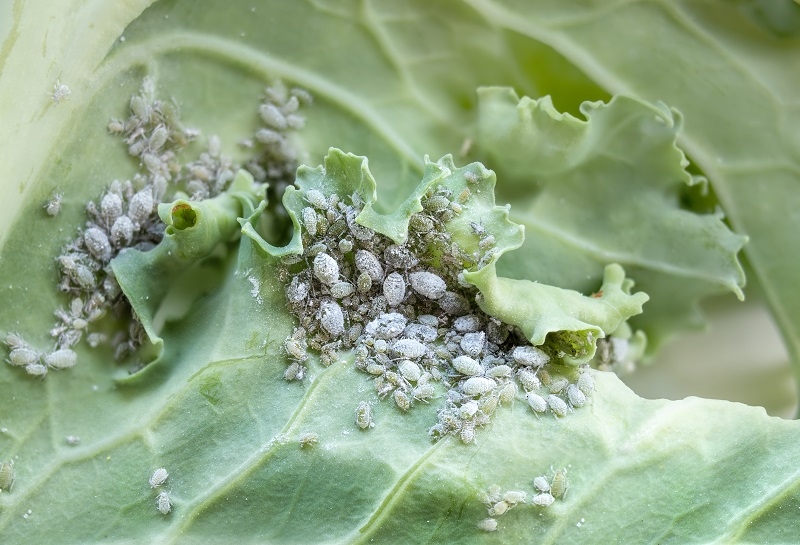
There’s nothing quite like that first cup of coffee on a cool morning while you step into your garden — until you notice something odd. Leaves look a bit crumpled, the buds aren’t opening right, and there’s this weird sticky shine on everything. You look closer and see them: tiny green or black dots that shouldn’t be there. And they’re moving.
Welcome to the not-so-fun part of gardening — the aphid infestation.
It happens to everyone at some point. These tiny plant vampires sneak in, multiply like crazy, and before you know it, your once-thriving plants look tired and stressed. The good news? It’s fixable. You don’t need expensive sprays or harsh chemicals. You just need a plan — and maybe a bit of patience.
So, let’s walk through how to spot aphids early, get rid of them naturally, and keep them from coming back.
Aphids are small insects, often pale green, but they can be black, brown, yellow, or even pink depending on the species. They feed on plant sap, using their tiny mouthparts to pierce leaves and stems. That’s where the trouble begins — they suck out the nutrients that keep your plants healthy and growing.
If there’s one thing gardeners quickly learn, it’s how fast this can snowball. A single female aphid can produce live young without even mating. Within a week, your plant’s gone from “a few bugs” to a full-scale colony.
They tend to hang out on the softest new growth — fresh leaves, flower buds, or the underside of stems. In a bad case, you’ll spot hundreds of them clumped together like little grains of rice.
And yes, it’s gross. But it’s also completely manageable once you understand how they operate.
If you know what to look for, you can stop aphids before they take over. Most people notice damage before they actually see the bugs. So here’s what you should watch out for:
If you’re into flowers, spotting aphids on roses is practically a rite of passage. Roses are like dessert to them — sweet, soft, and irresistible.
Catching them early means you’ll only need gentle fixes instead of full rescue missions.
Aphids don’t just crawl from plant to plant. They travel by air, water, and even hitch rides on your hands, clothing, or the wind. Some develop wings when colonies get crowded, helping them spread faster.
If you’re dealing with aphid infestations in pots, it’s usually from new nursery plants or from outdoor aphids sneaking in through windows. Once they’re inside, they can thrive because there are no predators around to eat them.
They love warm, humid weather and plants loaded with nitrogen (so go easy on that fertilizer). Understanding that helps you plan prevention — because it’s always easier to stop them from settling than to clean up after they’ve moved in.
Forget chemical sprays that smell like a lab experiment. Most gardeners swear by simple, natural aphid control methods — safe for your plants, bees, and the soil.
Here’s what actually works, from the easiest fix to the more involved ones.
The oldest trick in the book, and honestly, one of the best. A strong blast from your garden hose can knock aphids right off. They’re soft-bodied and can’t climb back easily.
Focus on the undersides of leaves and new shoots. Do it in the morning so the leaves dry by evening. Repeat every few days until you don’t see any clusters.
It’s cheap, easy, and oddly satisfying.
Sometimes water alone isn’t enough. That’s where a mild soapy mix helps. Combine a few drops of dish soap in a litre of water, pour it into a spray bottle, and mist the affected areas.
The soap breaks down the protective coating on their bodies, but it’s still gentle on plants. If you want something stronger, you can add a bit of neem oil or white vinegar — both are known as the best homemade aphid spray options around.
Always test your mix on one leaf first. Wait a day before spraying the whole plant.
Ladybugs, lacewings, and hoverflies love eating aphids. The problem is, they don’t always hang around unless you invite them.
That’s where encouraging aphid predators naturally comes in. Plant herbs like dill, fennel, or cilantro nearby. Their flowers attract beneficial insects that keep your garden balanced.
You can even buy live ladybugs online and release them at dusk (they’re less likely to fly away in the dark). It’s oddly fun, like hosting a rescue mission for your plants.
Aphids are picky about where they settle, so use that against them. Garlic, chives, and onions repel them, while nasturtiums act as bait — aphids will go for those instead of your prized flowers.
This is the “distraction technique” of gardening, and it works beautifully.

Indoor gardeners face a unique problem. Potted plants don’t get wind, rain, or predators to help control pests, so aphids can thrive quietly for weeks.
To tackle this:
If the problem keeps returning, repot the plant with fresh soil. You can also wipe the pot itself with vinegar to remove any lingering eggs.
Ever notice ants running up and down your plants when you have aphids? They’re not just random visitors. Ants protect aphids like tiny farmers — in exchange for honeydew, they guard them from predators.
So to truly end an infestation, you’ve got to deal with both. Break the partnership. Sprinkle cinnamon or diatomaceous earth near the base of plants to deter ants. Once they’re gone, ladybugs and lacewings can finally do their job.
Getting rid of aphids once is good. Keeping them away for good is better. Here’s how:
A balanced garden with healthy soil and diverse plants naturally resists pests.
Once you’ve dealt with the invasion, it’s time to help your plants bounce back.
Wipe off leftover honeydew with a damp cloth and trim any damaged leaves. Then, feed your plant with a gentle organic fertilizer or compost tea. It’ll help new growth come in strong and vibrant.
Avoid pruning too much — let your plant recover naturally. It’s better to support than to stress it further.
Myth 1: Aphids only target weak plants.
Not true. They’ll happily feed on the healthiest rose bush in your yard.
Myth 2: You need chemical sprays.
Not at all. Chemicals can harm pollinators and beneficial insects. Natural control works just as well.
Myth 3: Aphids disappear after one treatment.
Nope. You’ll likely need a few rounds of water or soap spray. Stay consistent.
Harsh pesticides give instant results but long-term problems. They harm bees, butterflies, and even soil microbes that keep plants strong.
By sticking to natural aphid control methods, you create an ecosystem that takes care of itself. It’s slower, yes — but it’s sustainable. A healthy garden doesn’t need constant fighting; it just needs balance.
Outdoor plants have natural helpers — wind, rain, predators. Indoors, it’s all on you. So if you grow houseplants, make inspection a habit. Turn leaves over, wipe them down occasionally, and quarantine any new arrivals for a few days before mixing them in.
Aphids love peace and quiet. Don’t give them that.
Gardening isn’t about perfection. It’s about observation. The best gardeners aren’t the ones with spotless leaves — they’re the ones who notice changes early and act gently.
An aphid infestation isn’t a failure. It’s just part of the natural rhythm of growing things. The trick is learning how to respond without overreacting.
A bit of water, a homemade spray, maybe a few ladybugs — and before long, your garden will bounce back. You’ll even start to see those once-troubled plants thriving again, leaves glossy, buds perky, everything humming with life.
So next time you spot a few tiny green invaders, smile. You’ve got this handled.
This content was created by AI